Table of Contents
Intro to the OPB
I bought this bar a month ago and have been using it exclusively since.
If you’ve done any casual browsing for power bars, you know about this one. Ever since the Ohio Power Bar – now called simply the OPB – appeared in 2014 it’s been the favorite of countless lifters and is Rogue’s flagship power bar. Despite that, I had never given it a try.
A power bar like this has all the little features designed for powerlifting movements: squat, bench press, and deadlift, plus any accessory exercises. Not so much any of the lifts involving grip transitions, front squatting, or high-rep Crossfit workouts.
Instead of the classic black zinc or newer e-coat, I opted for no coating, ie: bare steel. More on that below.
Unpacking
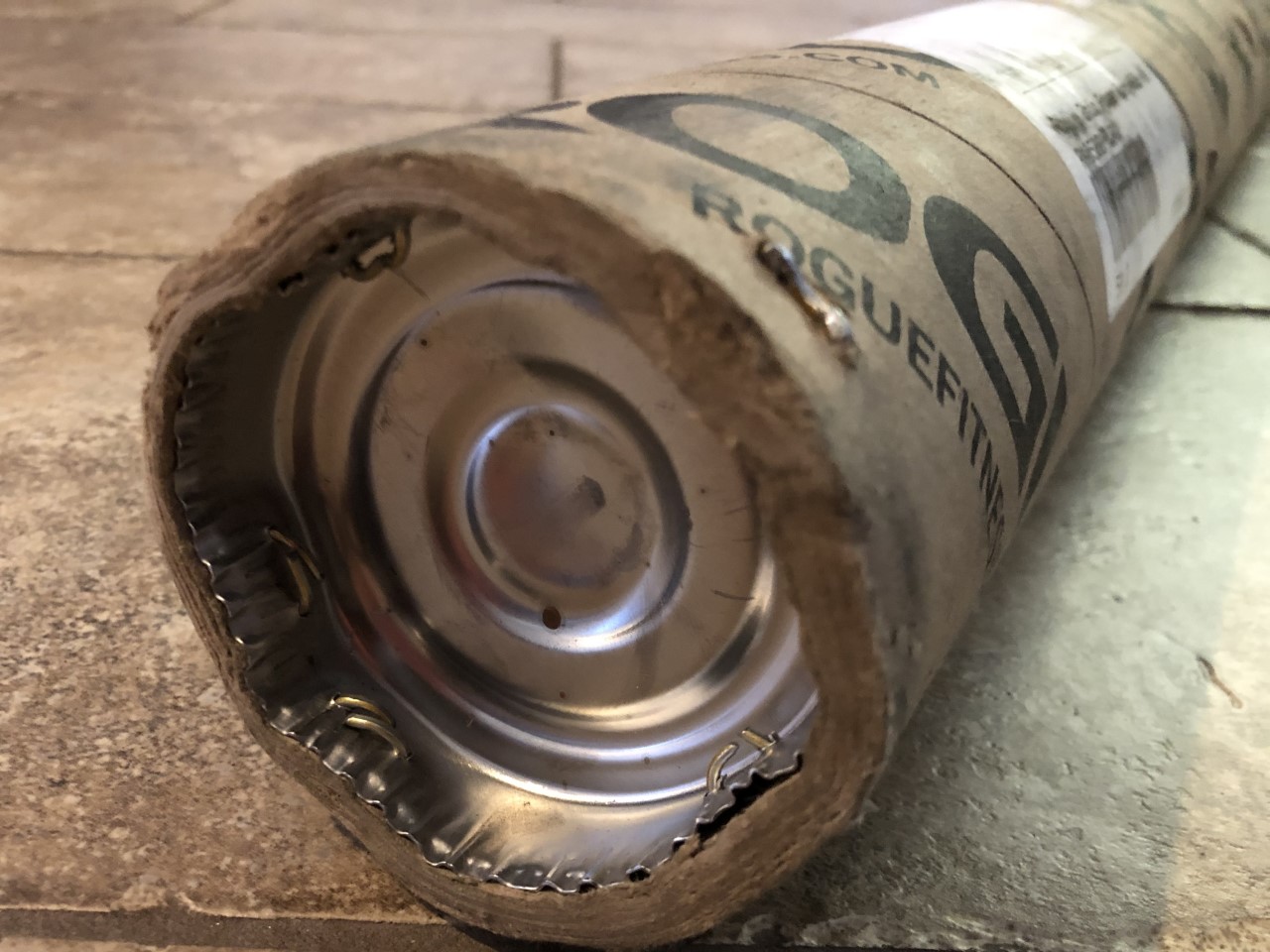
The plastic end caps on bar shipping tubes notoriously get knocked out from the force of a 45lb bar slamming against it in transit, letting the bar slide out and get marked up. These heavy gunned-in staples on Rogue’s tube held the metal end caps securely. Nothing was going to move. The tube was thick too. It took me some time to pry those staples out to break my way in.
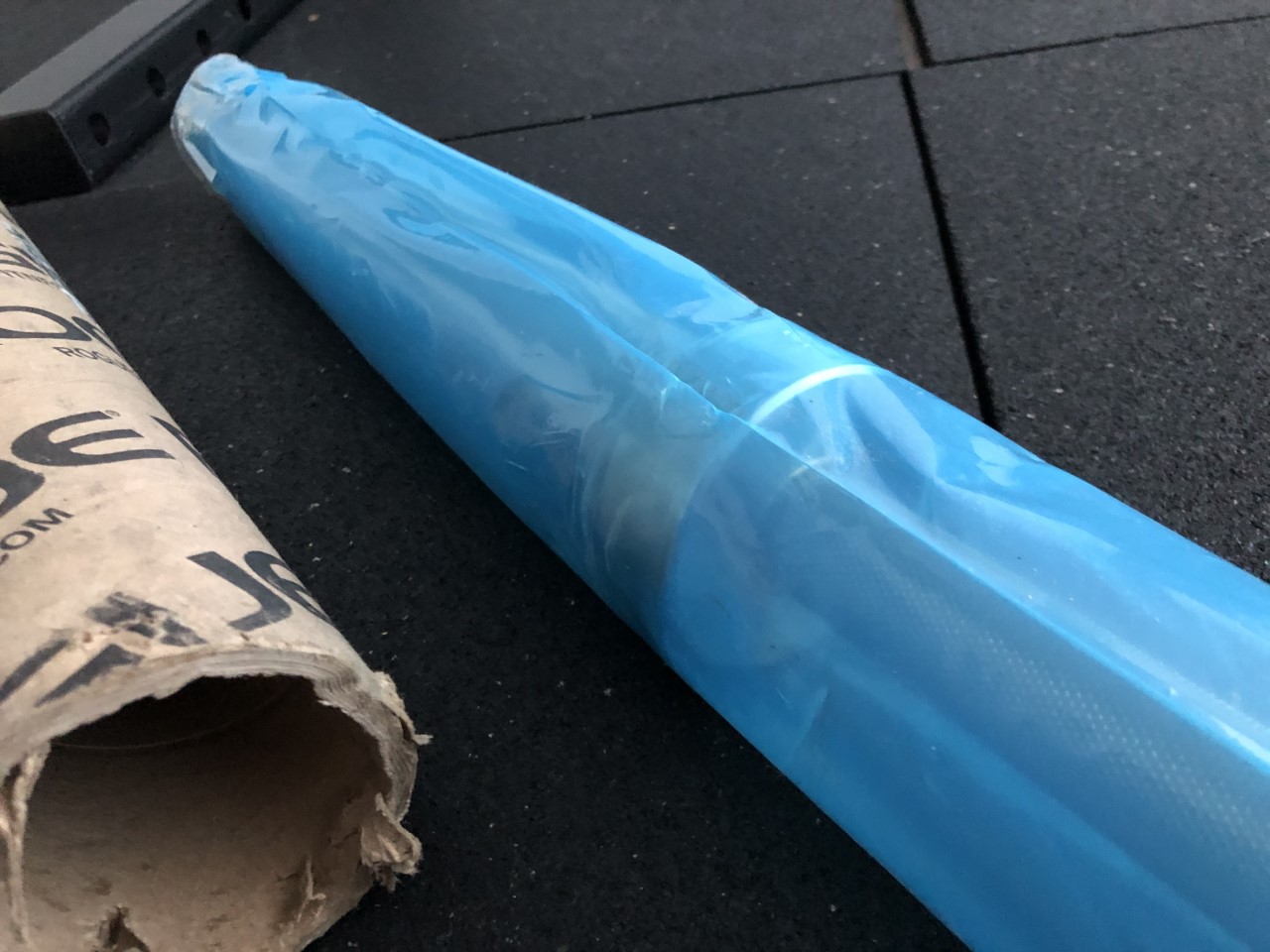
Inside the tube, Rogue protects the whole bar in a heavy plastic sheath. I haven’t run into any other company that does that. Most have the bars sitting right inside the tube with no extra protection.
After unpacking, I looked the bar over good, and I found no notable defects. Assuming this is typical, it explains one reason people buy Rogue. I’ve received a few scratched up bars of other brands, even ones that appear to have not broken out of the tube. The quality control here is nice.
Knurl and Feel
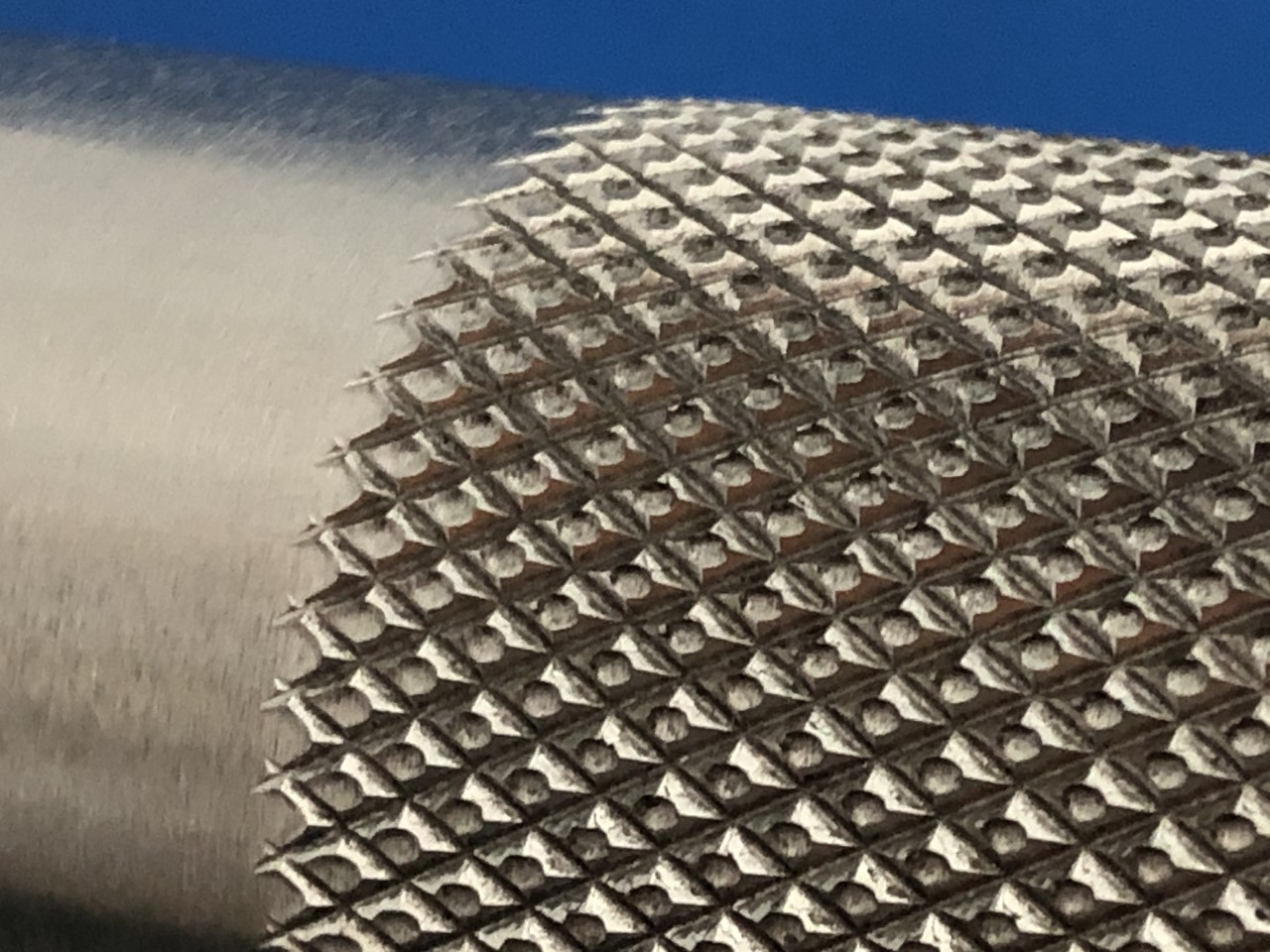
When you casually grab this power bar to feel out the knurl, you’d think it’s actually pretty moderate, if a little sticky. No. You have to load it up and feel that knurl dig into your skin under load, particularly something heavy enough like deadlifts. It turns out I wouldn’t want anything more aggressive than this. It’s just right.
This is what is known as a volcano knurl pattern, with the concavity in each peak between the cuts. With this being a power bar, Rogue cut this volcano knurl pretty deep, for a feel on the aggressive end of the spectrum as volcano knurl goes. Nearly all of Rogue’s other bars also have the volcano pattern of knurl but not as aggressive.
Due to many reasons, people like different levels of knurl, from different training types to skin thicknesses and whatever else. I put one of my little thin microfiber cloths over the center knurl to protect the front of my neck from the knurl. For back squats and every other exercise I do, I think it’s fantastic. Not the bar to be doing cleans with, with that center knurl that is just as serious as the rest of the bar.
If you’ve never used a power bar with aggressive knurl, you’ll be surprised how much better this kind of knurl feels for bench presses than passive knurl. It isn’t just for heavy squats and deadlifts. It sticks to your hands when you do presses in a secure feeling way, while passive knurl is prone to slipping enough to make you grip it harder, limiting your efficiency and ability to press more weight.
For those of you who are crazy, Rogue goes further with their Ohio Power Bar AGGRO.
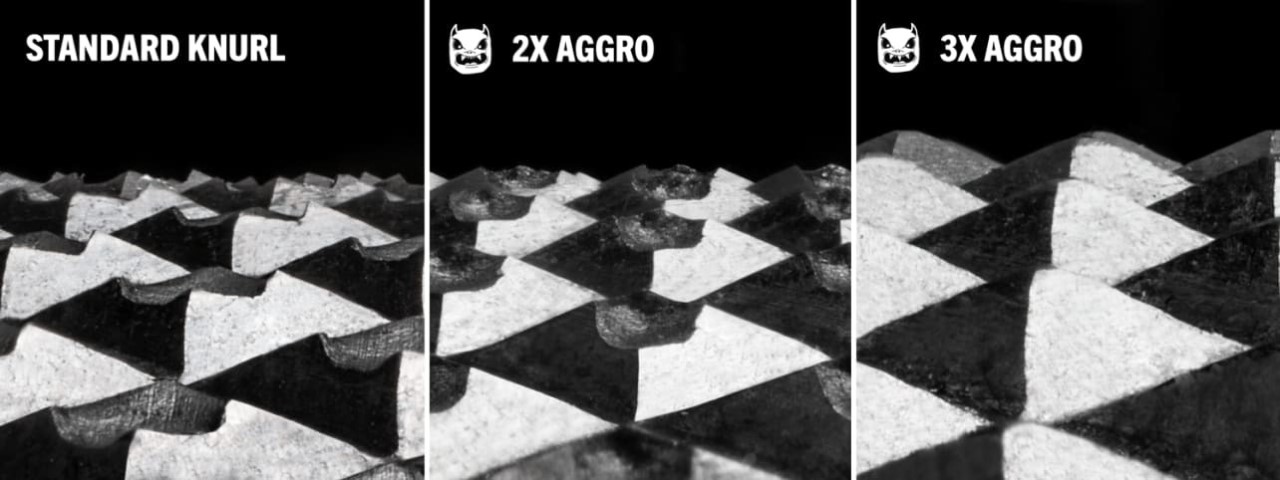
The “standard knurl” above is the regular OPB that I have. The middle has deeper cuts that result in taller volcano peaks. Then finally a mountain peak knurl that is decidedly sharp.
Bare Steel vs Coated
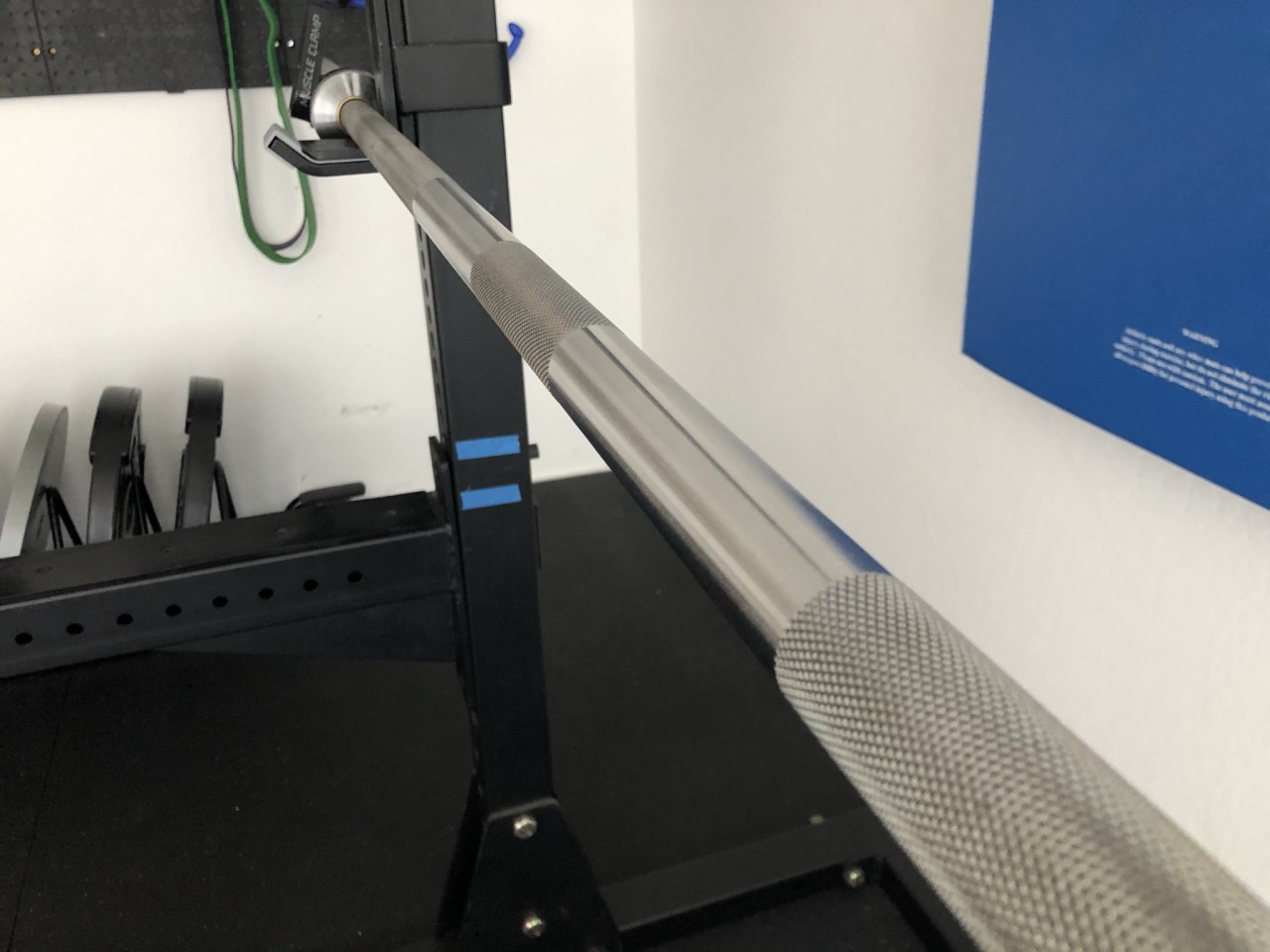
As far as the shaft coating, I wanted a good grip. Bare steel is always going to have the most aggressive and effective knurl compared to any coatings. Chrome, zinc, e-coat and Cerakote all fill in the knurl to some degree, making it feel more slippery. While this can be a good or bad thing, depending on what you want, personally I wanted the full effect of the knurl, and bare steel is just cool.
Black oxide is so thin that it arguably doesn’t fill in the knurl, but it’s also so thin that its corrosion protection is limited and you’ll see it start disappearing from your bar with regular abrasion just from your hands and body, leaving you with areas of exposed bare steel.
I don’t live in the kind of humid climate where steel is prone to rust, and the bar is sitting safety in my back room gym instead of a garage. In another situation it could make sense to pony up for the stainless steel version with its better corrosion resistance and same feel as the bare carbon steel of this one.
Sleeve Construction
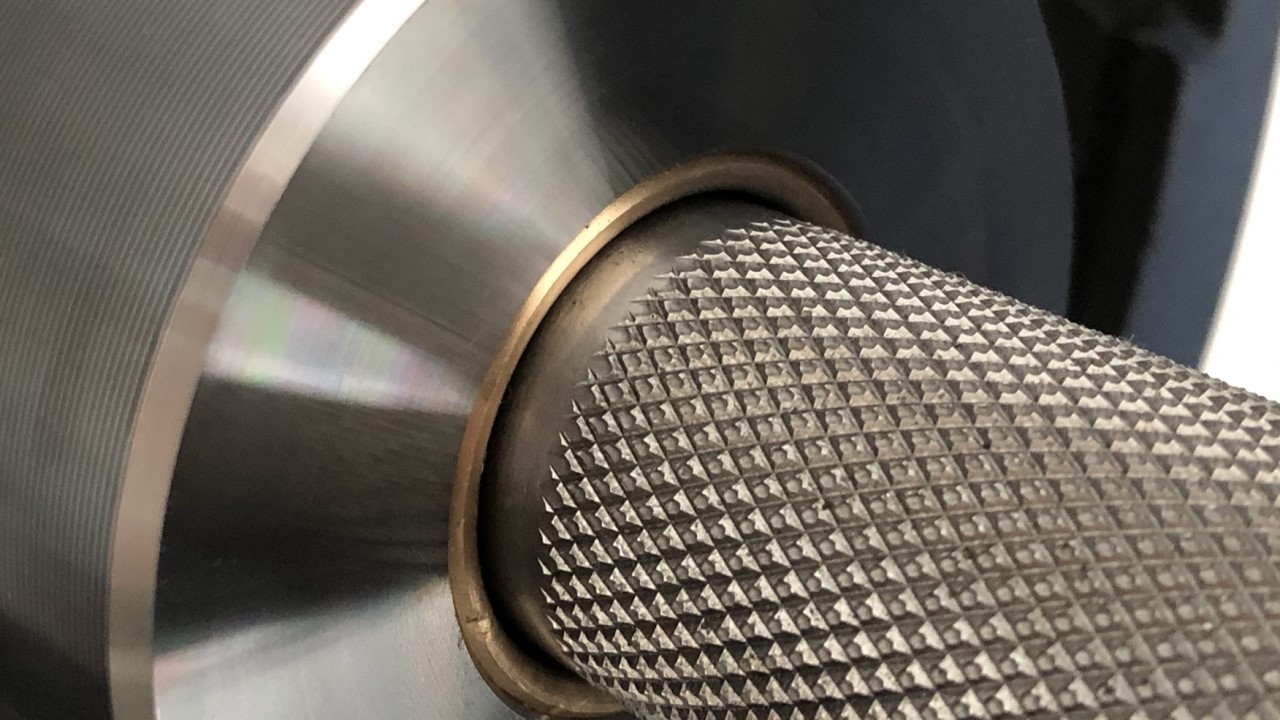
The sleeves spin great, better than some other bars I’ve used with bushing sleeves.
There’s a small amount of up-down and in-out play on the sleeves. If you’re going to be dropping it and you’re concerned about the banging metal noise that happens partly as a result of the metal-on-metal contact of brass bushings like this, I’d suggest getting another bar, something with the quieter composite bushings.
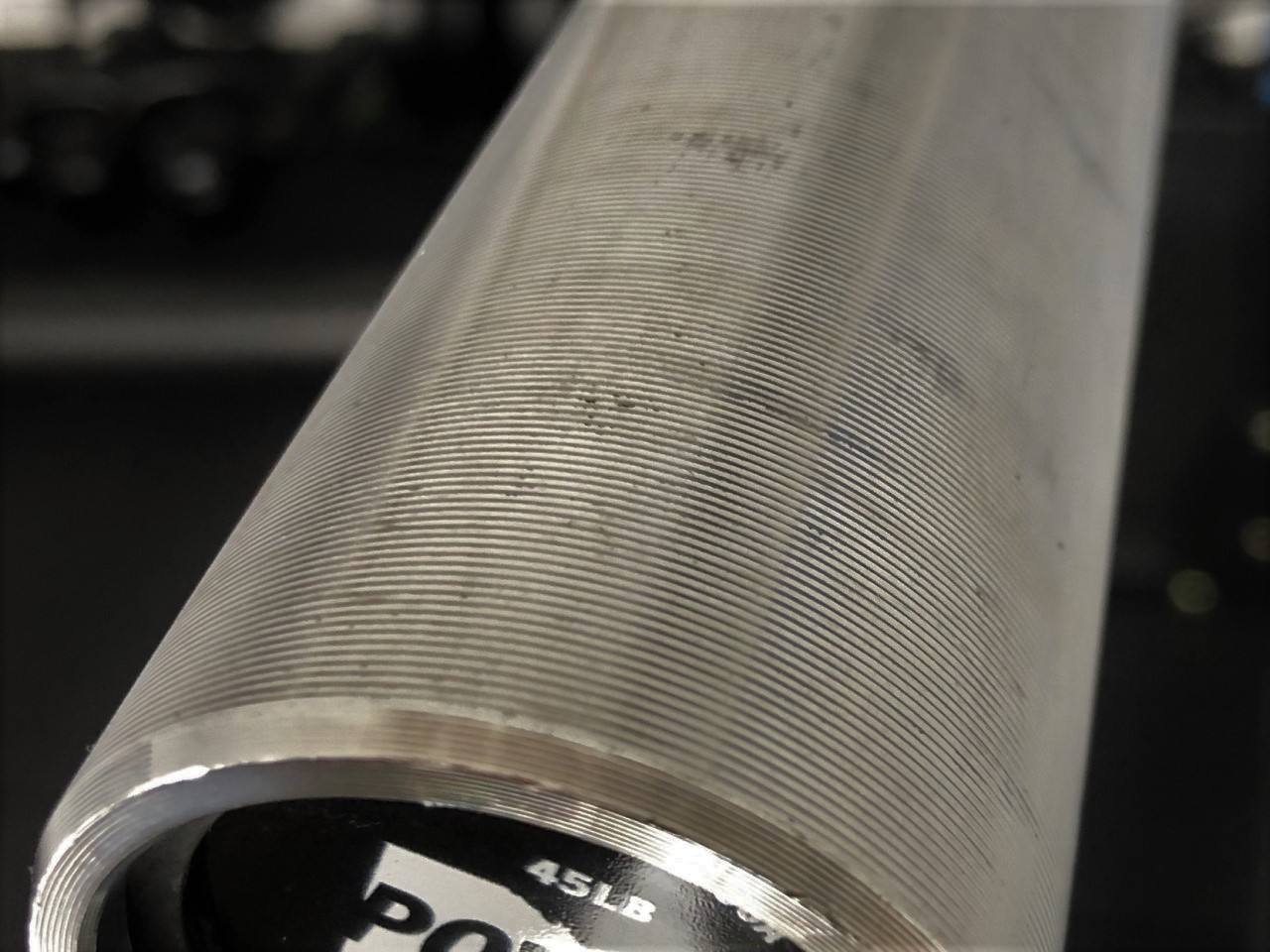
I wish manufacturers would stop putting these grooves on all their bar sleeves, which are put there to help keep plates and collars more secure but do make a racket when you slide iron plates on. I found that the specific kind of bar I wanted was impossible to find with smooth sleeves, and I had to give up that requirement and hope for the best. I find it to be a small enough annoyance that I’ll live with it.
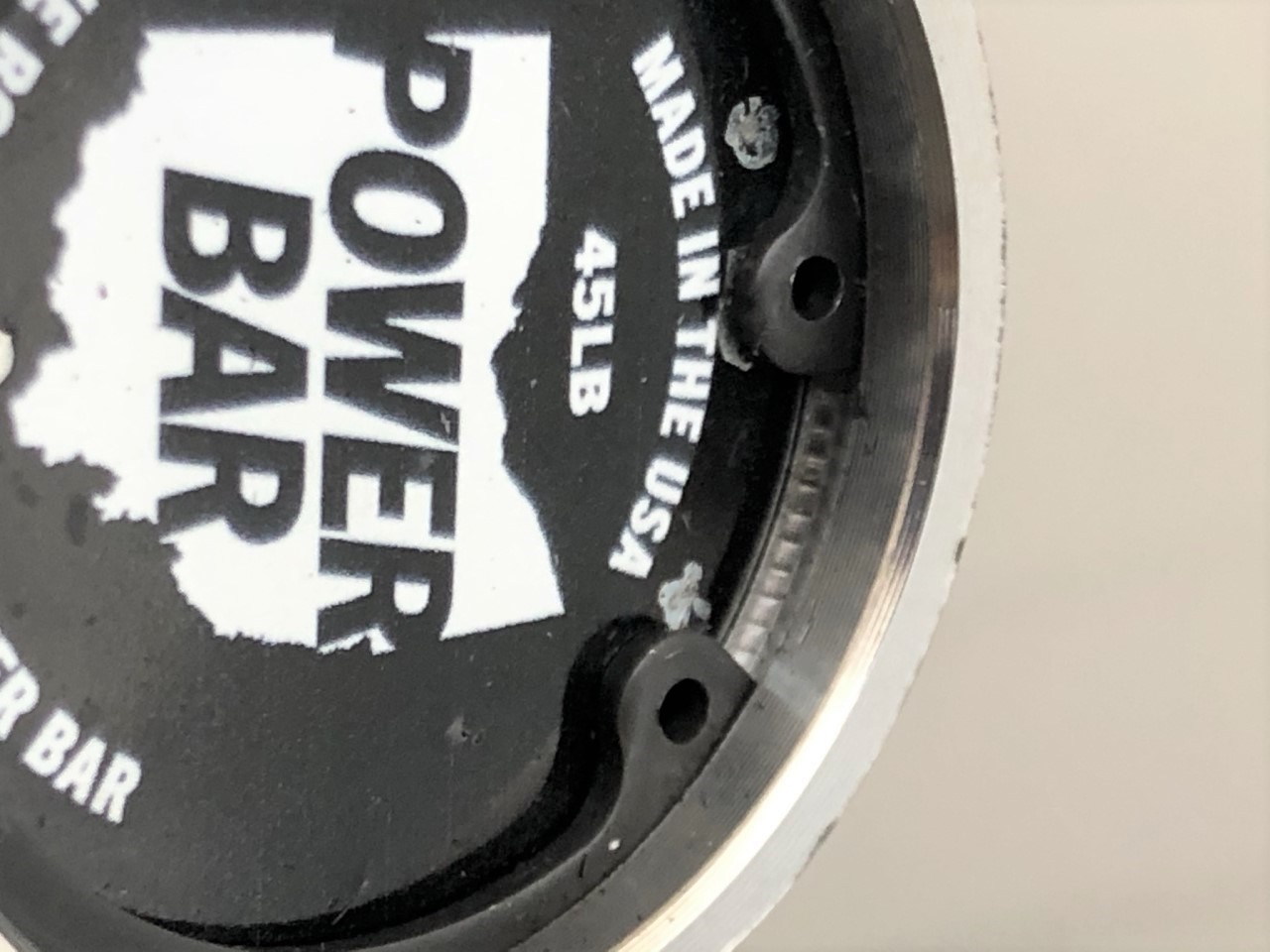
The end cap is secured with a single heavy-duty snap ring.
Maintenance on a Bare Steel Bar
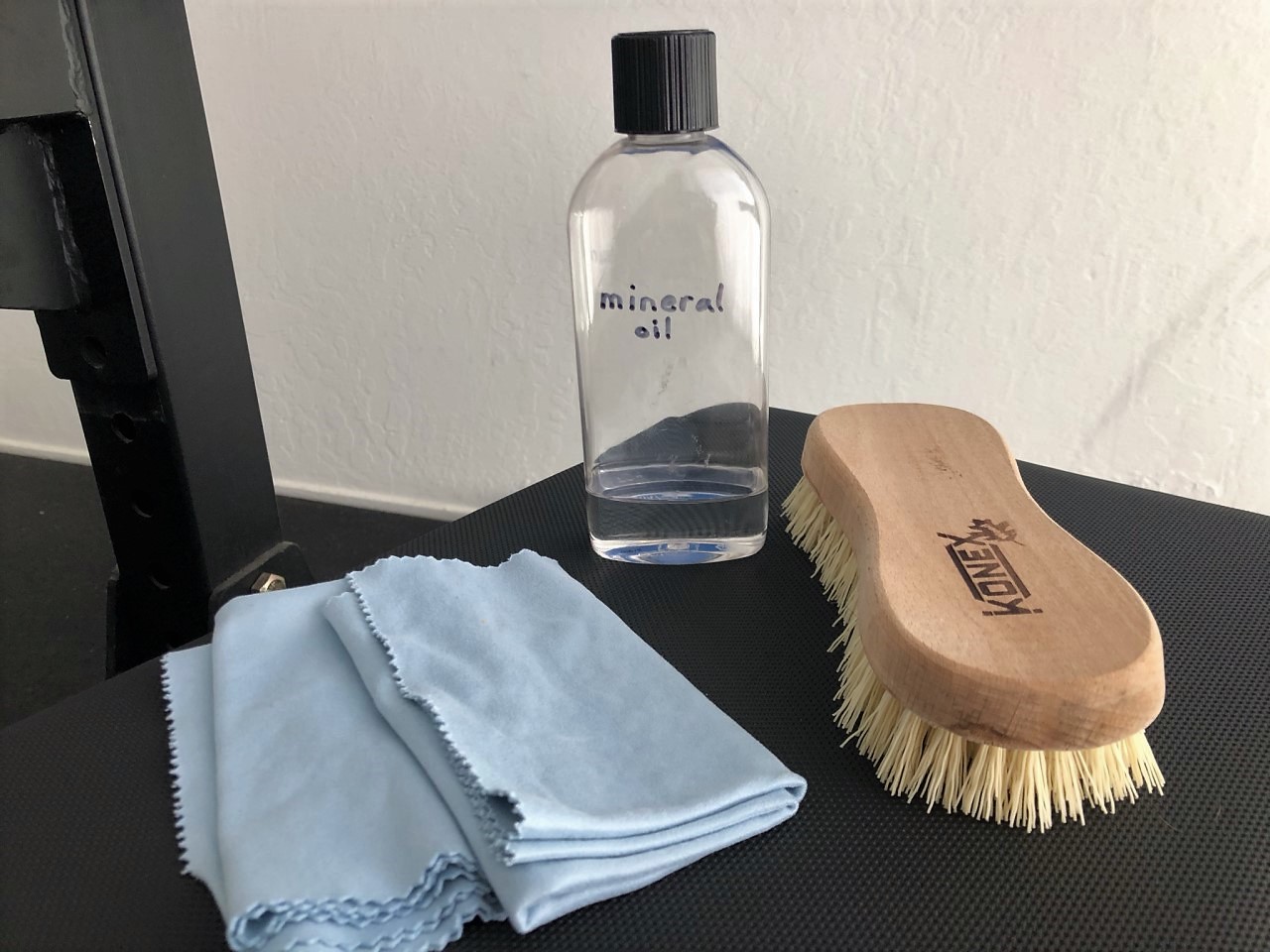
This is what I used immediately upon receiving the bar to clean and protect it.
For any/all of these wiping steps, you need these thin, smooth microfiber cloths that you would use to wipe glasses, a computer screen, or camera lens. Any other type, from cotton to any thicker microfiber, is begging to leave horrible pieces of itself all over the knurl, especially on this bar. Even this type of cloth can leave some lint, the way the knurl really pulls at it, but it’s as good as it gets.
First, wipe it down good with a cloth to get rid of dust and to assess how much oil is on it.
If it turns out to be oily, get that factory oil off. It’s too dirty. Wipe it with a wet cloth soaked in a light solution of soapy water, being careful not to get any water under the sleeves, then dry with another cloth. My OPB was fairly clean, with the nice way Rogue packages it, so I didn’t have to do this.
Next, get mineral oil or 3-in-One Oil on the second cloth and wipe it all over the bar shaft and sleeves. The sleeves on this bar are bare steel too. Leave the oil on for an hour or so (I don’t know how long, honestly) to let it penetrate into every crevice, and then wipe it down good with a dry cloth until you don’t feel an oily residue. Enough oil will be left on it to protect it.
Finally, brush the knurl with a stiff bristle nylon brush to get rid of any lint. A brass brush is fine too. Brass won’t scratch bare steel.
This and other considerations are detailed in my barbell maintenance guide.

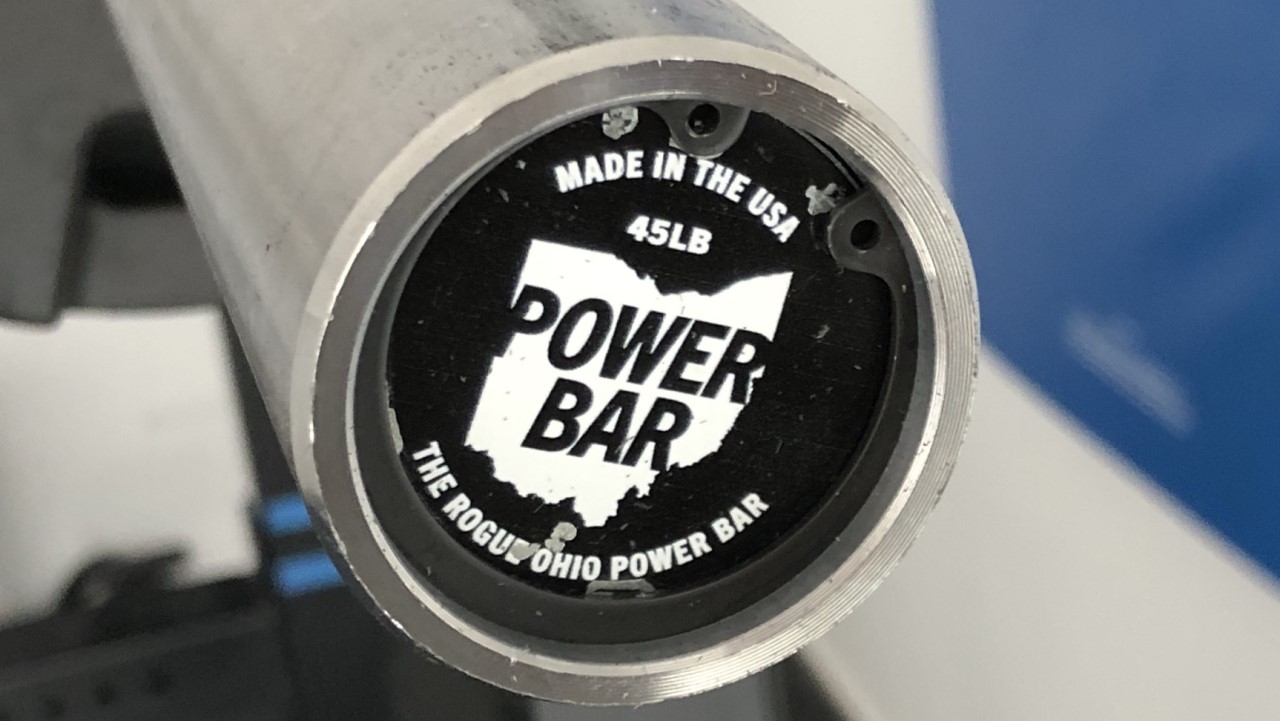
I have one and it’s heavy and solid!
My OPB 1.2 in black oxide doesn’t wear noticeably where I grab it. But wears really badly where it sits on my traps. I do squat topless, so I think it’s the sweat that really eats the coating.
That would make sense. I had a black oxide one that was wearing around the middle more too.